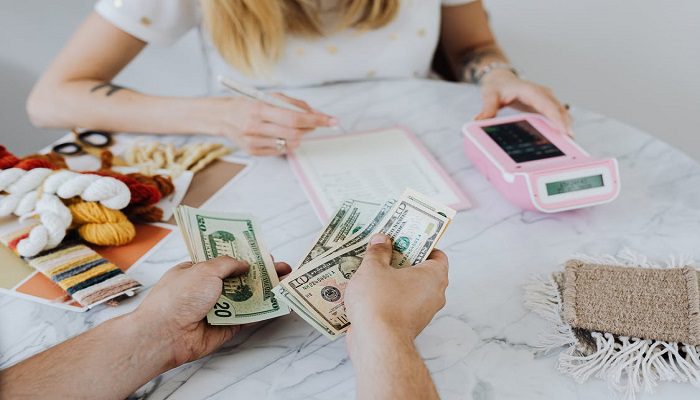Too often the suites disappoint.
Consider these bombs – Caddyshack II, Jaws – The Revenge, Mall Cop 2, Major League II, and I could go on. But every once in a while a movie sequel hits a home run – Goldfinger, The Good, The Bad and The Ugly and The Godfather, Part II come to mind. So what will critics (including me) have to say about the sequel to America’s not-so-small pandemic economy, the Paycheck Protection Program? Really, it is too early to tell, as the SBA has yet to issue any rules or guidance to fill the many loopholes left by HR 133, The Consolidated Appropriations Act, 2021. But, as we await further guidance of the SBA, which are expected to be released overnight, take a look at what we know so far and see if and how this sequel can help many of our small and medium businesses.
A quick overview
Last week my law partner, Tom Zamadics, wrote an excellent overview of the new provisions of the Paycheque Protection Program (“PPP”), one day after the enactment of the bill. This article will delve a little deeper into the nuances of two aspects of PPP, episode 2; the ability for a business to receive a second PPP loan; and the availability of additional funds for businesses that have obtained a first-round loan but have repaid the funds – otherwise known as the PPP Phoenix program.
Second round of PPP financing
A very important development in HR 133 is the allocation of an additional $ 284 billion (approximately) in funds for PPP loans, including second-draw loans. While the general concepts surrounding these loans remain largely the same, there are a number of changes from the original, some clearly designed to benefit small businesses, including a special benefit for certain types of businesses. .
Amount of the loan
A business may be eligible for a second loan of up to 2.5 times the average monthly salary costs during the period of one year prior to the loan date or during the calendar year 2019, up to a maximum loan of $ 2 million. Presumably recognizing the terrible impact the pandemic has had on the accommodation and food services industries, these companies can apply for a loan of up to 3.5 times the average monthly payroll, while the maximum loan amount remains at $ 2 million. The $ 2 million loan limit is new and appears to address previously expressed concerns, both by Congress and the public, about companies that have received initial PPP loans well in excess of $ 2 million.
Other eligibility conditions
Congress included several new or revised eligibility criteria for “second cycle” applicants. The income reduction test is an essential new addition to the eligibility requirements for PPP loans. A business must demonstrate that it experienced a reduction of at least 25% in its gross revenue between comparable quarters in 2019 and 2020. There are other timelines for businesses that were not in operation in Q1, Q2 , Q3 and Q4 of 2019. Applications submitted as of January 1, 2021, are eligible to use the gross revenue of Q4 2020 compared to Q4 2019. It is not clear whether this revenue reduction test will replace or just will complete the subjective necessity certification of the CARES law. This question can be answered with advice from the SBA, but subjective certification seems somewhat meaningless if a small business saw a 25% reduction in gross sales in the same quarter in 2019 compared to to 2020.
If you are a business owner lucky enough to have experienced stable or increasing gross income in 2020 compared to 2019, don’t assume that your business is not eligible for a second PPP loan. The applicant’s ability to select which quarter 2019/2020 they will use to determine whether they meet the requirement to reduce gross income year over year can save the day. What if your business was forced to shut down or experienced a substantial downturn for a period of weeks or months in 2020, perhaps due to a COVID outbreak in its workforce? Even if you have neutral or slightly declining annual gross income, your business may meet the 25% reduction requirement for a single quarter and may be eligible to apply for a second PPP loan.
Another change in eligibility concerns the maximum number of employees. HR 133 provides that the business should not have more than 300 employees, although an accommodation or food service business with multiple locations should not have more than 300 employees at a single location. This is a decrease from the limit of 500 employees under the CARES Act and subsequent directives.
Finally, remember that you must use or will use the full amount of your first PPP loan to be eligible for the second drawdown.
The Phoenix
At the start of the CARES Act, and for several months afterwards, we advised many companies about the risk associated with obtaining and maintaining a PPP loan. After all, unless the business is relatively sure that it would get a full or near full loan forgiveness, this is just a loan; one with a good interest rate, but otherwise horrible repayment terms.
Anyone interested in the PPP loan program is familiar with the large publicly traded companies who, at the start of the program, quickly received and returned their PPP loans. What about the multitude of small business owners who, fearful of repayment terms or how the SBA may interpret subjective necessity certification, have done the same and paid off their loan? I didn’t see any details on how many companies are repaying loans, but I did read that over $ 30 billion in funds had been repaid, only a fraction of that was from publicly traded companies.
For many companies, paying off the PPP loan was and remains a sound business decision. For others, the additional rules and guidance issued by the SBA came too late; they had taken the safest route and returned the funds from their PPP loan. I expect a lot of these businesses to be closed and never reopen. Others continue to struggle financially.
For those who are still in business, HR 133 offers a second chance at a PPP loan. Specifically, the law directs the SBA to issue guidelines within 17 days of enactment that allow borrowers who have repaid all or part of their PPP loan to reapply for the maximum applicable amount until they have returned. have not received any discount.
Granted, we have to wait and see what the advice delivers, but this is a unique opportunity for many small businesses. Individuals in this position should continue to monitor SBA guidelines and keep in touch with their lenders and legal advisors.
Conclusion
While many aspects of Episode 2 of the PPP loan program remain a bit unclear, the framework is in place for additional financial relief and assistance, especially for small and medium enterprises. Stay tuned for further plot developments.
© 2021 Ward and Smith, Pennsylvania. All rights reserved.Revue nationale de droit, volume XI, number 5
[ad_2] PLC 4ever
PLC 4ever



